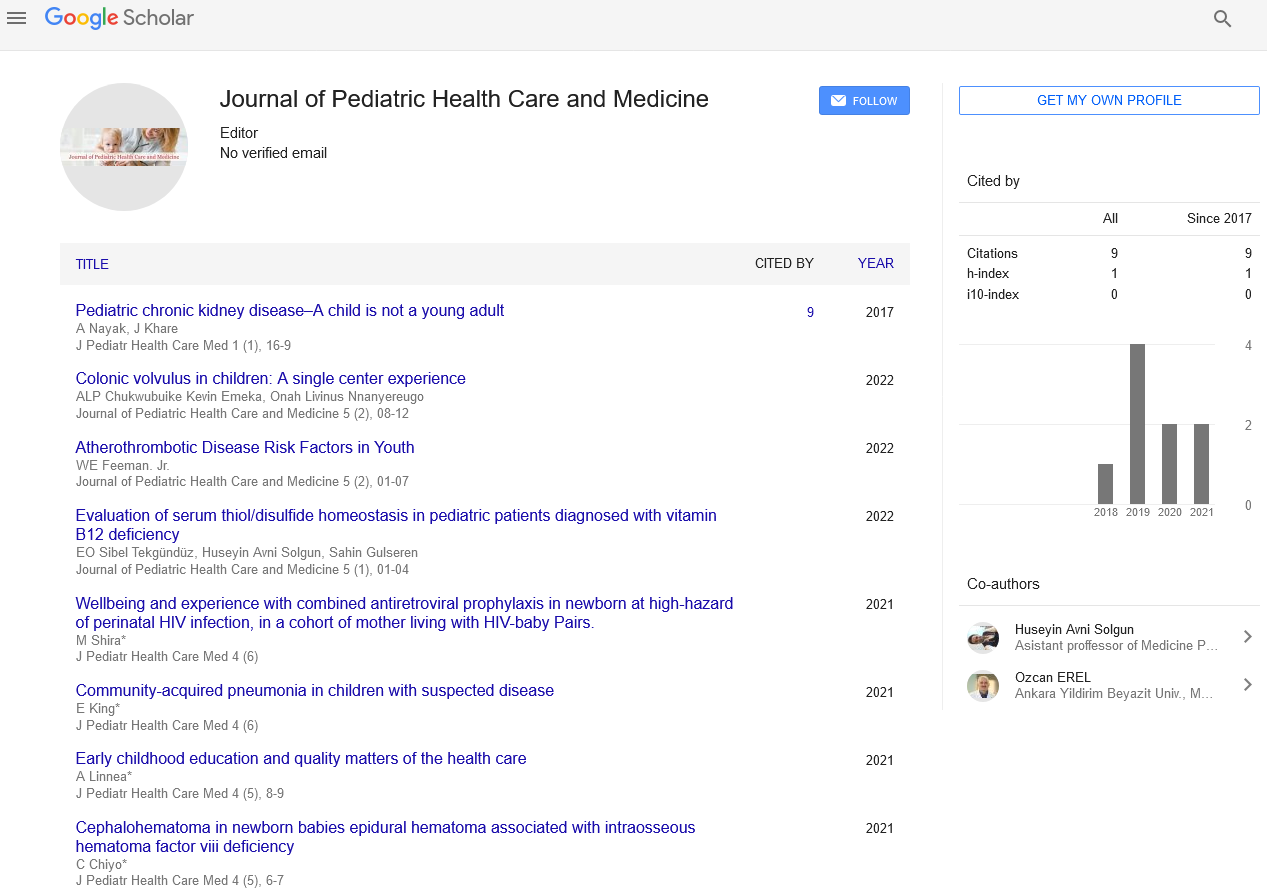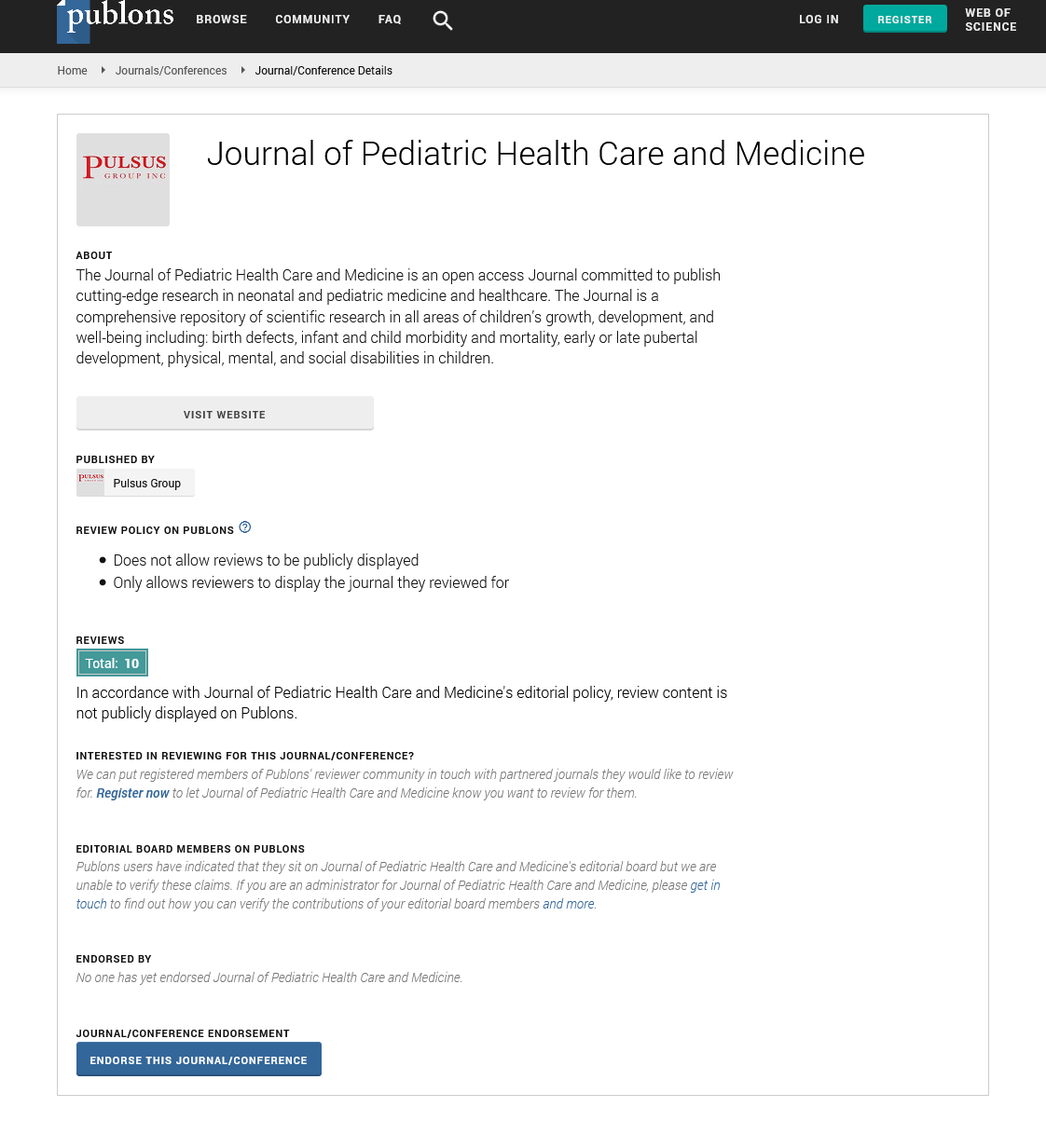Impact of the covid-19 on neonatal care
Received: 09-May-2022, Manuscript No. puljphcm-22-4993; Editor assigned: 11-May-2022, Pre QC No. puljphcm-22-4993 (PQ); Accepted Date: May 31, 2022; Reviewed: 24-May-2022 QC No. puljphcm-22-4993 (Q); Revised: 28-May-2022, Manuscript No. puljphcm-22-4993 (R); Published: 02-Jun-2022, DOI: 10.37532/puljphcm.2022.5 (3).40
Citation: Feynman E. Impact of the covid-19 on neonatal care. J Pedia Health Care Med. 2022; 5(3):40.
This open-access article is distributed under the terms of the Creative Commons Attribution Non-Commercial License (CC BY-NC) (http://creativecommons.org/licenses/by-nc/4.0/), which permits reuse, distribution and reproduction of the article, provided that the original work is properly cited and the reuse is restricted to noncommercial purposes. For commercial reuse, contact reprints@pulsus.com
Abstract
The coronavirus disease (SARS-CoV-2) pandemic had proven to be the world's largest and most widespread health crisis. Despite the fact that the novel coronavirus disease (Covid-19) has primarily targeted adults, contingency measures are affecting all aspects of medicine around the world. Puerperants, parents of newborns, and infants in particular are becoming infected, wreaking havoc on neonatal care. There is currently no conclusive evidence that SARS-CoV-2 can be transmitted transplacentally, and there have been no reports of SARS-CoV-2 virus detection in amniotic fluid or the placenta of infected pregnant women. However, information on whether early-stage fetal infection can have teratogenic effects is limited.
Keywords
Coronavirus; Pregnant women; Neonatal medicine; Infection; Infant
Introduction
The horizontally infected infants documented to yet have had a moderate clinical profile and a satisfactory outcome, which is encouraging in neonatal medicine. Nonetheless, the SARS-CoV-2 outbreak resulted in significant modifications in neonatology unit care policies, affecting not only infants with SARS-CoV-2 infection and infants of infected parents, but also the care provided to other hospitalized patients. Several significant points were impacted by these changes:
• neonatal unit organization and workflow
• parent-infant bonding and family-centered care
• stress-related health professional effects
Neonatal units, like most medical hospital divisions, had to make significant changes to their regular routine during that crisis. As healthcare workers become ill or are displaced in other professions as a result of the pandemic, scheduling shifts to provide excellent support has become challenging and unpredictable.
Health-care personnel were also stressed by pandemic breakouts due to a lack of medical resources, overwork with long shifts and restrictions on socializing, and the pain of losing colleagues or becoming infected and perhaps infecting families. Furthermore, we should include the moral suffering and its consequences experienced by health professionals who were unable to act in accordance with the evidence and their firmly held values about family care due to factors beyond their control. The day-to-day in neonatal facilities can be made less stressful by well-designed actions that induce stress reduction, give psychological support, and develop resilience. Perspectives to recognize and relieve moral discomfort were required in this case. Identifying the most vulnerable professionals, as well as senior experts, debriefing together about ethically challenging clinical cases, effective communication within the team, accurate guidelines to follow, and flexibility to allow health workers to develop their work efficiently should help deal with such difficulties and provide moral comfort. Clear and sympathetic leadership, interdisciplinary teamwork, and mutual support were all critical in this regard. Because of the high prevalence of psychological distress among confined health workers, institutional support was necessary to help them return to work and, if necessary, give psychological counseling.
The family-centered care approach was implemented in newborn facilities based on ethical considerations and scientific evidence that suggests that it is critical to create a healing environment in order to promote proper neurodevelopment and obtain the optimal health outcomes in thefamily unit. In order to strengthen the ability to offer health throughout development, the model effectively supports parent-infant attachment. Families, particularly parents, have an active role as primary careers for their children, and health professionals and baby families share decision-making responsibilities.
Being able to play the position of primary caregiver has a favorable impact on parents’ emotional health, which has a long-term and medium-term impact on their children. Furthermore, marketing that responsibility to parents aided the professionals’ well-being in dealing with the situation
Because of isolation suggestions, contingency preparations during pandemic epidemics may directly conflict with the model. Early skin-to-skin contact, the presence of the father at labor, and late cord clamping were all restricted in the initial recommendations, which supported revisions to delivery plans. Furthermore, infants born to infected mothers and neonates with confirmed SARS-CoV-2 infection were separated and isolated in a separate room with special air handling and protective equipment. However, depending on the severity of the condition, the symptoms of illness, and the findings of virus testing, guidelines have been amended on a case-bycase basis. Separation of the binomial mother-child pair is not recommended in mothers in good clinical health, as long as preventative steps such as wearing a facemask, practicing hand and breast cleaning before each feeding, and maintaining a safe distance of two meters are taken. Similarly, infected neonates were subjected to recommendations ranging from solitary admittance without caregivers to tactics tailored to the baby’s clinical circumstances, but with their parents present.
Importantly, health workers rely on contingency planning favorably, assisting parents in reducing their anxiety and encouraging them to participate in their children’s care. This attempt required adequate family psychological support as well as the engagement of social workers. Despite all of these threats, the coronavirus pandemic epidemic provided possibilities to develop measures to sustain neonatal care excellence. In fact, a stressful setting has advantages since it encourages improvement and greater conversation about how to improve treatment.
Accepting that every pandemic has a learning curve in terms of how to avoid and contain the epidemic, we should not neglect the potential to answer epidemiological, organizational, diagnostic, and treatment concerns through qualitative and quantitative research studies. In order to improve information and experience for future prevention and treatment methods, infected patients must be followed up on and outcomes must be recorded in databases.






